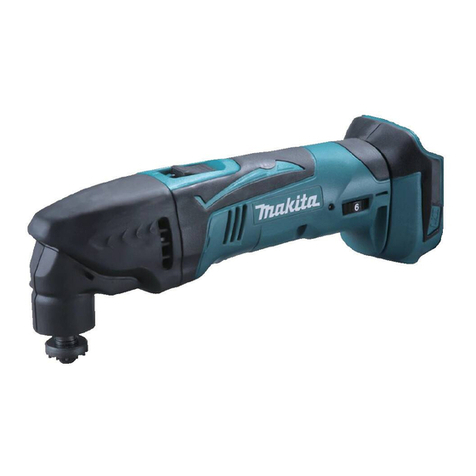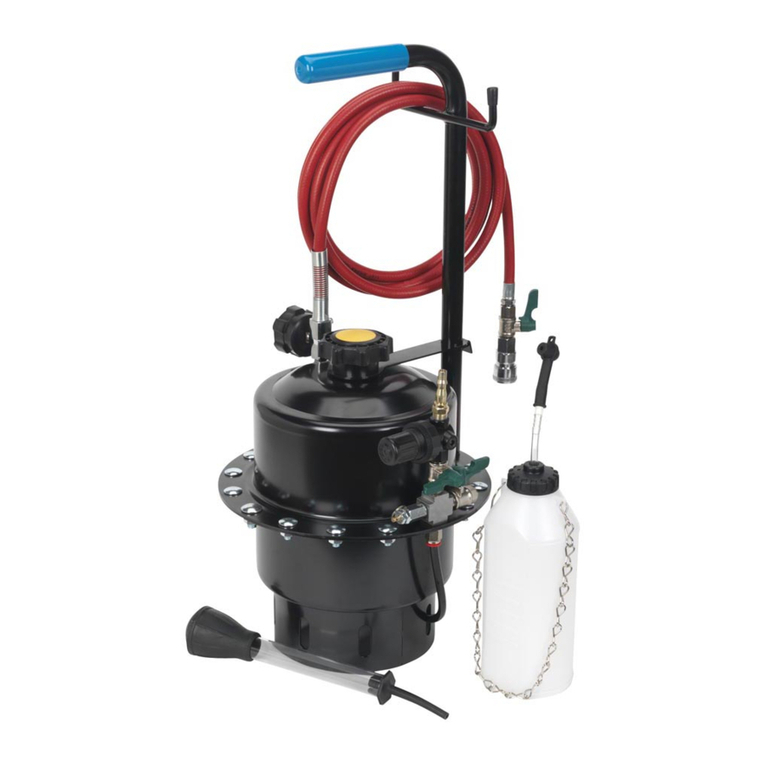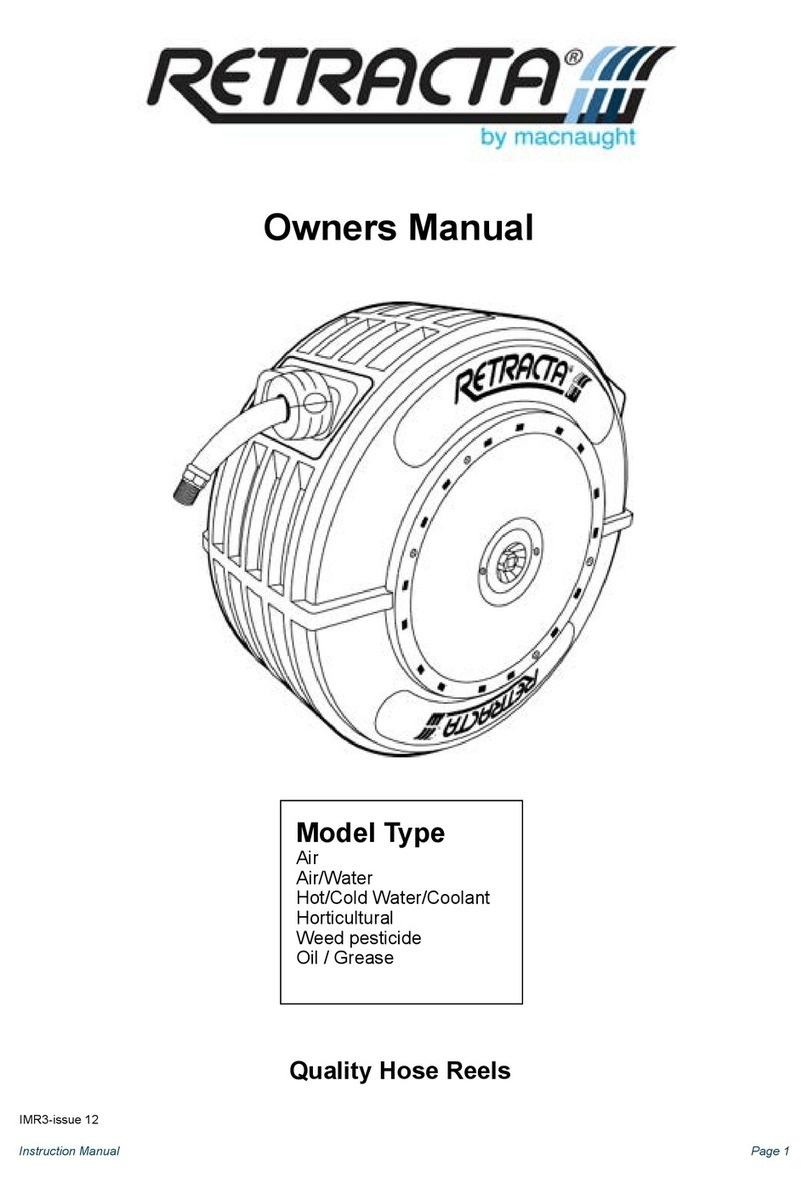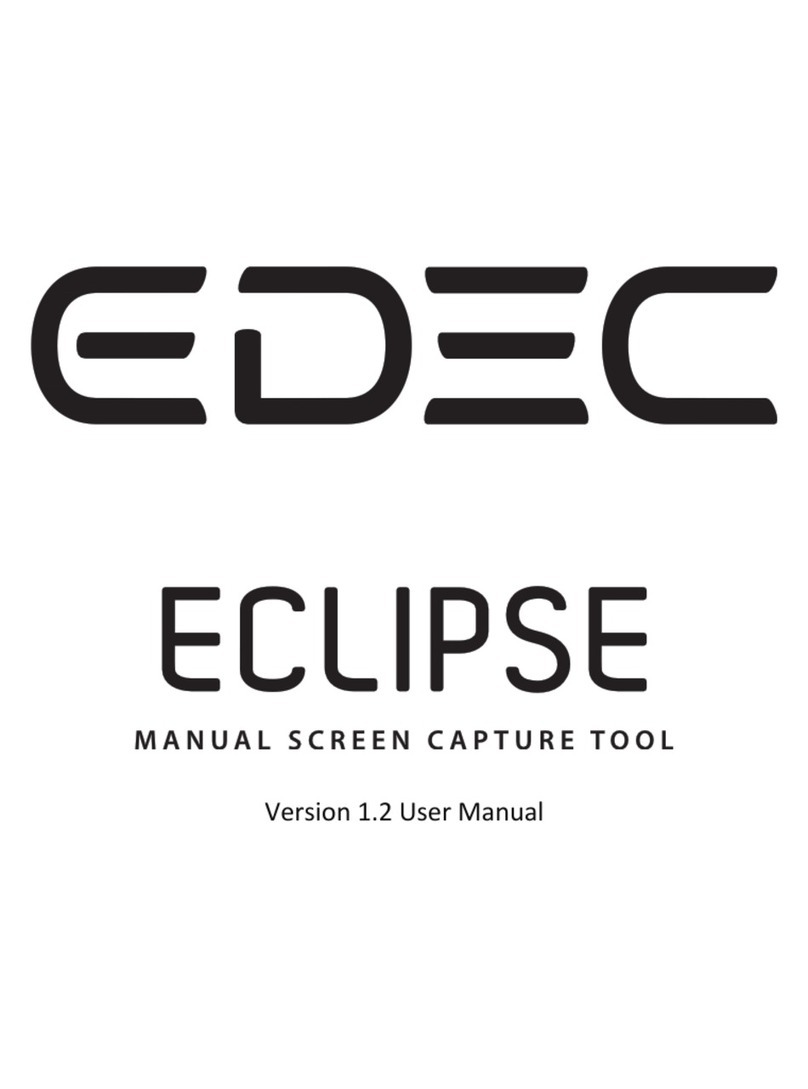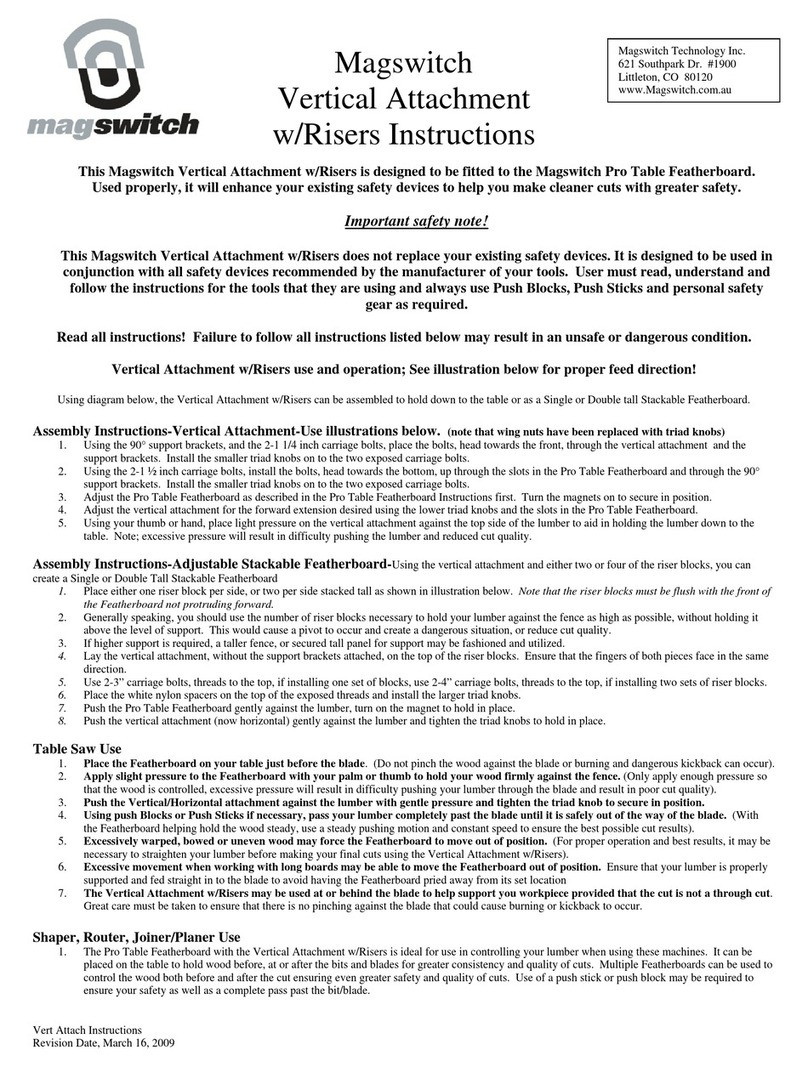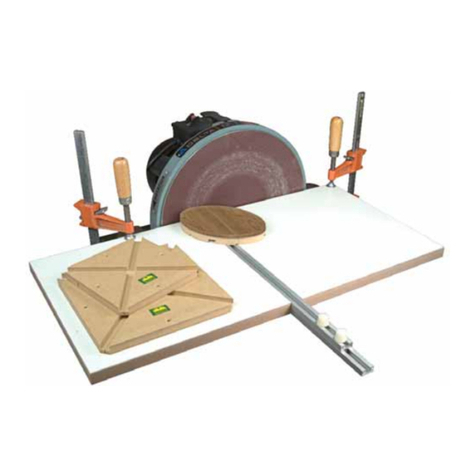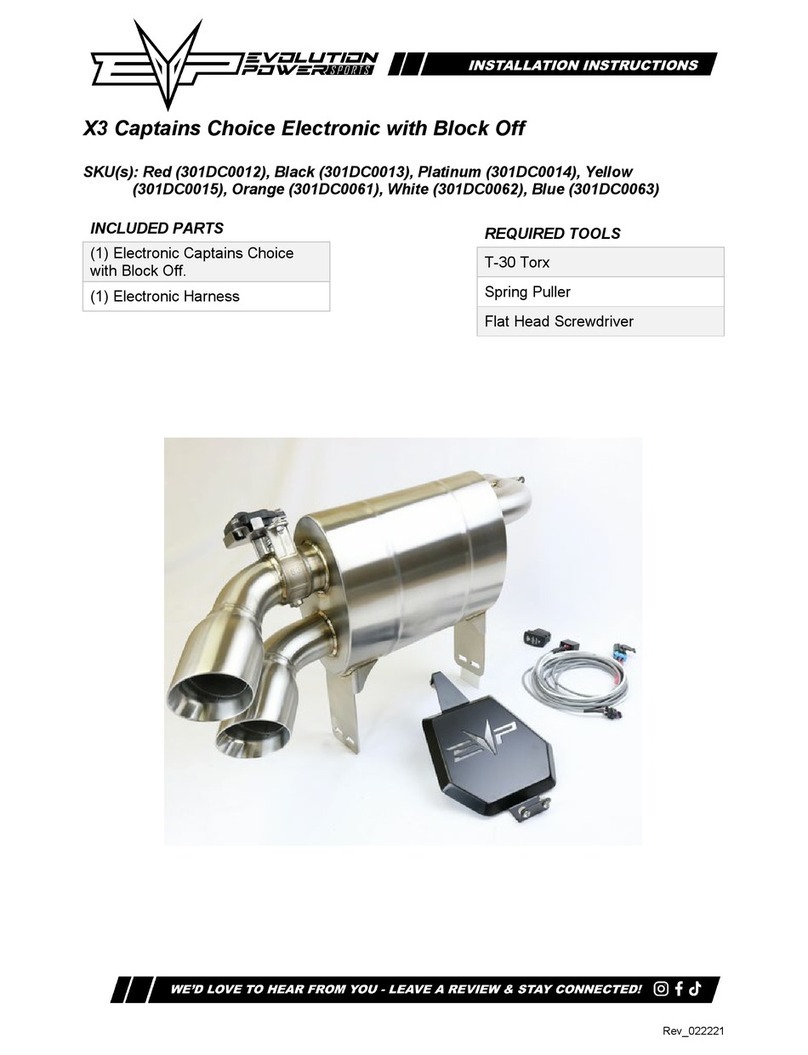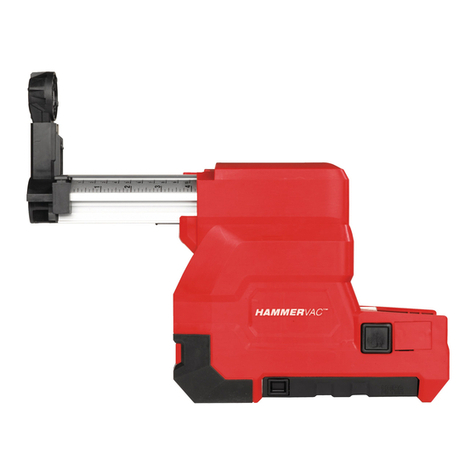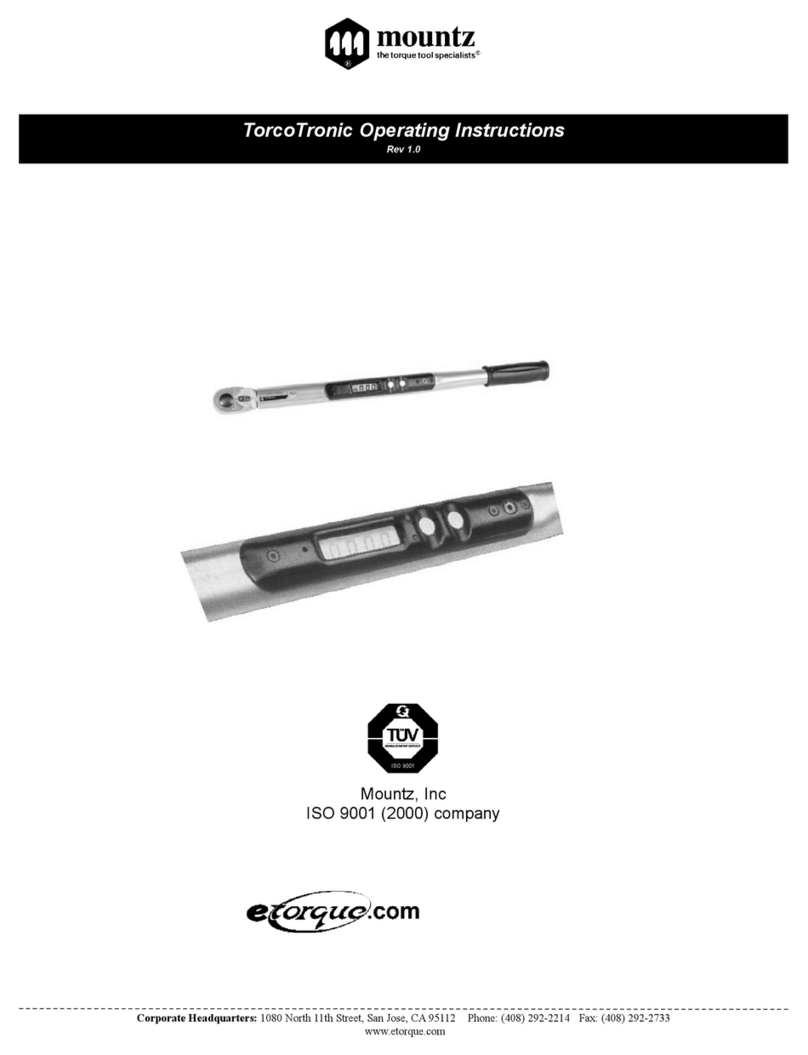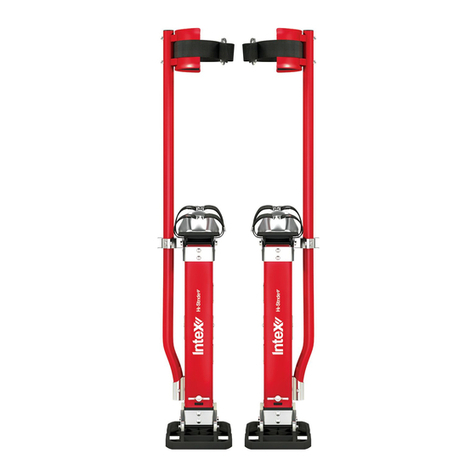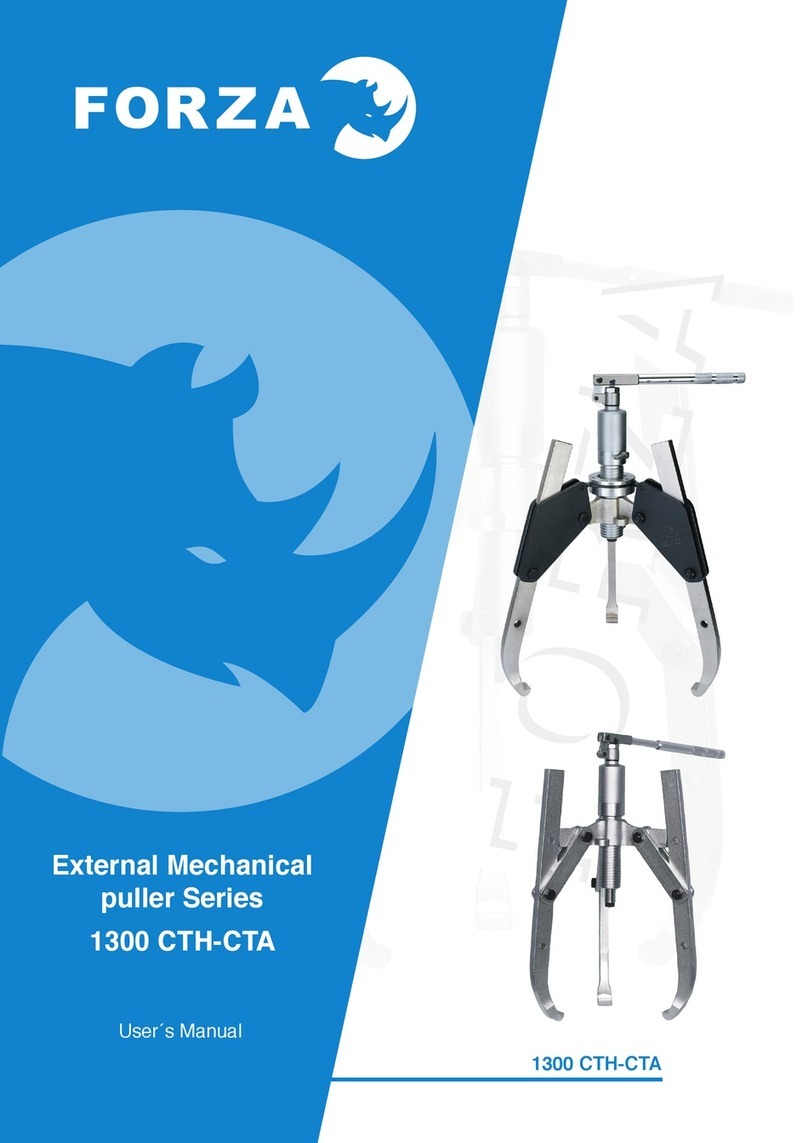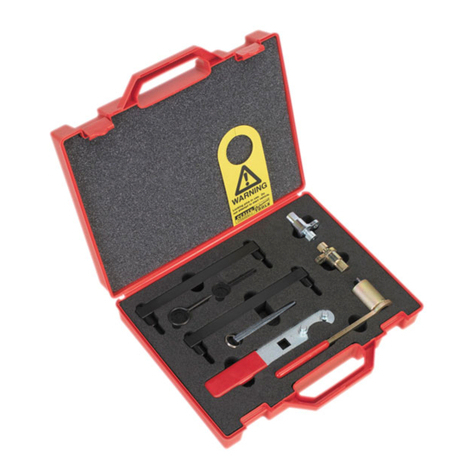HERKULES DLS2000 Operation manual

Art.Nr.
3909601931
AusgabeNr.
3909601850
Rev.Nr.
20/10/2017
DLS2000
Nachdrucke, auch auszugsweise, bedürfen der Genehmigung. Technische Änderungen vorbehalten. Abbildungen beispielhaft!
DE Pneumatisches Multifunktionswerk-
zeug
Originalbetriebsanleitung
4-10
GB Pneumatic multifunction tool
Translation of Original Operating Manual 11-17
FR Outil pneumatique multi-fonctions
Traduction des instructions d’origine 18-25
IT Utensile pneumatico multifunzione
Traduzioni del manuale d‘uso originale 26-32
CZ Pneumatický multifunkční nástroj
Překlad originálního návodu k obsluze 33-39
SK Pneumatický multifunkčný nástroj
Preklad originálu návodu na obsluhu 40-46
EE Pneumaatiline multifunktsioontöö-
riist
Tõlkimine juhiseid
47-53
HU Pneumatikus többfunkciós szers-
zám
Az eredeti használati útmutató fordítása
54-60
BIH Pneumatski višefunkcijski alat
Prevođenje Original uputstvo za upotrebu 61-67
BG Пневматичен мултифункционален
инструмент
Превод на оригиналното ръководство за експлоатация
68-75
HR Pneumatski višenamjenski alat
Prijevod Original upute za uporabu 76-82
DK Pneumatisk multifunktionsværktøj
Oversættelse af original betjeningsvejledning 83-89
FI Paineilmatoiminen monitoimityökalu
Käännös Original käyttöopas 90-96
IS Fjölnota þrýstiloftsverkfæri
Þýðing á Original Notkunarhandbók 87-103
NL Pneumatische multi-machine
Vertaling van de originele handleiding 104-110
NO Pneumatisk multifunksjonsverktøy
Oversettelse fra den originale bruksanvisningen 111-117
RU Пневматический
многофункциональный инструмент
Перевод оригинального руководства по эксплуатации
118-125
RS Pneumatski višefunkcijski alat
Prevod originalnog uputstva za upotrebu 126-132
SI Pnevmatsko večfunkcijsko orodje
Prevod originalnih navodil za uporabo 133-138
ES Herramienta neumática multifunción
Traducción de las instrucciones originales de funcionamiento 139-145
SE Pneumatiskt multifunktionsverktyg
Översättning från den ursprungliga bruksanvisningen 146-152
TR Pnömatik çok fonksiyonlu alet
Orijinal kullanım kılavuzunun çevirisi 153-159

2 І 164
1
7
1
2
3
4
56

3 І 164
5
8
3
2
7
1
2

4 І 164
DE AT CH Vor Inbetriebnahme Bedienungsanleitung und Sicherheitshinweise lesen und
beachten!
DE AT CH Gehörschutz tragen!
DE AT CH Tragen Sie immer Sicherheitshandschuhe wenn Sie das Gerät benutzen.
Erklärung der Symbole auf dem Gerät
DE AT CH Allgemeiner Gefahrenhinweis!
DE AT CH Rutschfeste Sicherheitsschuhe tragen.
DE AT CH Schutzbrille tragen!
DE AT CH Bei Staubentwicklung Atemschutz tragen!

5 І 164
DE AT CH Gehörschutz tragen!
DE AT CH Tragen Sie immer Sicherheitshandschuhe wenn Sie das Gerät benutzen.
werkzeug nur zusammen mit diesen Dokumenten weiter.
• Der Benutzer oder der Arbeitgeber des Benutzers
muss die spezischen Risiken bewerten, die aufgrund
jeder Verwendung auftreten können.
• Die Sicherheitshinweise sind vor dem Einrichten, dem
Betrieb, der Reparatur, der Wartung und dem Aus-
tausch von Zubehörteilen sowie vor der Arbeit in der
Nähe des Druckluftwerkzeugs zu lesen und müssen
verstanden werden. Ist dies nicht der Fall, so kann
dies zu schweren körperlichen Verletzungen führen.
• Das Druckluftwerkzeug sollte ausschließlich von qua-
lizierten und geschulten Bedienern eingerichtet, ein-
gestellt oder verwendet werden.
• Das Druckluftwerkzeug darf nicht verändert werden.
Veränderungen können die Wirksamkeit der Sicher-
heitsmaßnahmen verringern und die Risiken für den
Bediener erhöhen.
• Benutzen Sie niemals beschädigte Druckluftwerk-
zeuge. Pegen Sie Druckluftwerkzeuge mit Sorgfalt.
Kontrollieren Sie regelmäßig, ob bewegliche Teile ein-
wandfrei funktionieren und nicht klemmen, ob Teile
gebrochen oder so beschädigt sind, dass die Funktion
des Druckluftwerkzeugs beeinträchtigt ist. Prüfen sie
Schilder und Aufschriften auf Vollständigkeit und Les-
barkeit. Lassen Sie beschädigte Teile vor dem Einsatz
des Gerätes reparieren oder erneuern. Viele Unfälle
haben ihre Ursache in schlecht gewarteten Druckluft-
werkzeugen.
Spezielle Sicherheitshinweise
Gefährdungen durch herausgeschleuderte Teile
• Trennen Sie das Druckluftwerkzeug von der Druck-
luftversorgung, bevor Sie das Einsatzwerkzeug oder
Zubehörteile austauschen oder eine Einstellung oder
Wartung vorgenommen wird.
• Bei einem Bruch des Werkstücks, von Zubehörteilen
oder des Druckluftwerkzeugs, können Teile mit hoher
Geschwindigkeit herausgeschleudert werden.
• Beim Betrieb, beim Austausch von Zubehörteilen sowie
bei Reparatur- oder Wartungsarbeiten am Druckluft-
werkzeug ist immer ein schlagfester Augenschutz zu
tragen. Der Grad des erforderlichen Schutzes sollte für
jeden einzelnen Einsatz gesondert bewertet werden.
• Tragen Sie bei Arbeiten über Kopf einen Schutzhelm.
Stellen sie sicher, dass auch für andere Personen kei-
ne Gefahren entstehen.
• Stellen Sie sicher, dass das Werkstück sicher befes-
tigt ist.
• Schalten Sie das Druckluftwerkzeug nur dann ein,
wenn das Einsatzwerkzeug mit Hilfe der Arretierung
ordnungsgemäß im Druckluftwerkzeug gehalten wird.
• Um Verletzungen zu vermeiden, müssen alle Ver-
schleißerscheinungen zeigenden, gebrochenen oder
verbogenen Teile der Arretierung ausgetauscht wer-
den.
• Setzen Sie das Einsatzwerkzeug fest auf der zu be-
arbeitenden Oberäche auf, bevor Sie das Druckluft-
werkzeug einschalten.
Einleitung
HERSTELLER:
scheppach
Fabrikation von Holzbearbeitungsmaschinen GmbH
Günzburger Straße 69
D-89335 Ichenhausen
VEREHRTER KUNDE,
wir wünschen Ihnen viel Freude und Erfolg beim Arbei-
ten mit Ihrem neuen Gerät.
HINWEIS:
Der Hersteller dieses Gerätes haftet nach dem gelten-
den Produkthaftungsgesetz nicht für Schäden, die an
diesem Gerät oder durch dieses Gerät entstehen bei:
• unsachgemäßer Behandlung,
• Nichtbeachtung der Bedienungsanweisung,
• Reparaturen durch Dritte, nicht autorisierte Fach-
kräfte,
• Einbau und Austausch von nicht originalen Ersatz-
teilen,
• nicht bestimmungsgemäßer Verwendung.
Gerätebeschreibung (Fig. 1)
1. Werkzeugaufnahme
2. Schiebehülse
3. Stiel
4. Auslösehebel
5. Anschluss
6. Haltegriff
7. Einsatzwerkzeug
Entpacken
• Öffnen Sie die Verpackung und nehmen Sie das Gerät
vorsichtig heraus.
• Entfernen Sie das Verpackungsmaterial sowie Verpa-
ckungs-/ und Transportsicherungen (falls vorhanden).
• Überprüfen Sie, ob der Lieferumfang vollständig ist.
• Kontrollieren Sie das Gerät und die Zubehörteile auf
Transportschäden.
• Bewahren Sie die Verpackung nach Möglichkeit bis
zum Ablauf der Garantiezeit auf.
ACHTUNG
Gerät und Verpackungsmaterialien sind kein Kinder-
spielzeug! Kinder dürfen nicht mit Kunststoffbeu-
teln, Folien und Kleinteilen spielen! Es besteht Ver-
schluckungs- und Erstickungsgefahr!
Allgemeine Sicherheitshinweise
m WARNUNG – Zur Verringerung eines Verletzungsri-
sikos Betriebsanleitung lesen.
WARNUNG Lesen Sie alle Sicherheitshinweise und
Anweisungen. Versäumnisse bei der Einhaltung der
Sicherheitshinweise und Anweisungen können elektri-
schen Schlag, Brand und/oder schwere Verletzungen
verursachen.
Bewahren Sie alle Sicherheitshinweise und Anwei-
sungen für die Zukunft auf. Geben Sie Ihr Druckluft-

6 І 164
• Verwenden Sie niemals stumpfe Meißel, denn für die-
se ist übermäßig viel Druck erforderlich, und es kann
zu Ermüdungsbrüchen kommen. Stumpfe Werkzeuge
können zur Verstärkung der Schwingungen führen,
weshalb stets scharfe Einsatzwerkzeuge verwendet
werden sollten.
• Kühlen Sie niemals heiße Zubehörteile in Wasser ab.
Dies kann zu Sprödigkeit und vorzeitigem Versagen
führen.
• Das Einsatzwerkzeug nicht als Hebel missbrauchen
(z. B. zum Stemmen) Meißelbruch oder Beschädigung
kann die Folge sein. Arbeiten Sie in kleinen Teilstücken
um ein Steckenbleiben zu vermeiden.
• Vermeiden Sie direkten Kontakt mit dem Einsatzwerk-
zeug während und nach der Benutzung, weil es heiß
oder scharfkantig sein kann.
Gefährdungen am Arbeitsplatz
• Ausrutschen, Stolpern und Stürzen sind Hauptgrün-
de für Verletzungen am Arbeitsplatz. Achten Sie auf
Oberächen, die durch den Gebrauch des Druckluft-
werkzeugs rutschig geworden sein können, und auf
durch den Luftschlauch bedingte Gefährdungen durch
Stolpern.
• Gehen Sie in unbekannten Umgebungen mit Vorsicht
vor. Es können versteckte Gefährdungen durch Strom-
kabel oder sonstige Versorgungsleitungen gegeben
sein.
• Das Druckluftwerkzeug ist nicht zum Einsatz in explo-
sionsgefährdeten Atmosphären bestimmt und nicht ge-
gen den Kontakt mit elektrischen Stromquellen isoliert.
• Überzeugen Sie sich, dass sich an der Stelle, die
bearbeitet werden soll, keine Strom-, Wasseroder
Gasleitungen benden (z.B. mit Hilfe eines Metall-
suchgerätes).
Gefährdungen durch Staub und Dämpfe
• Die beim Einsatz des Druckluftwerkzeugs entste-
henden Stäube und Dämpfe können gesundheitliche
Schäden (wie z. B. Krebs, Geburtsfehler, Asthma und/
oder Dermatitis) verursachen; es ist unerlässlich, eine
Risikobewertung in Bezug auf diese Gefährdungen
durchzuführen und geeignete Regelungsmechanis-
men umzusetzen.
• In die Risikobewertung sollten der bei der Verwendung
des Druckluftwerkzeugs entstehende Staub und der
dabei möglicherweise aufwirbelnde vorhandene Staub
einbezogen werden.
• Das Druckluftwerkzeug ist nach den in dieser Anlei-
tung enthaltenen Empfehlungen zu betreiben und zu
warten, um die Freisetzung von Staub und Dämpfen
auf ein Mindestmaß zu reduzieren.
• Die Abluft ist so abzuführen, dass die Aufwirbelung
von Staub in einer staubgefüllten Umgebung auf ein
Mindestmaß reduziert wird.
• Falls Staub oder Dämpfe entstehen, muss die Haupt-
aufgabe sein, diese am Ort ihrer Freisetzung zu kon-
trollieren.
• Alle zum Auffangen, Absaugen oder zur Unterdrückung
von Flugstaub oder Dämpfen vorgesehenen Einbau-
oder Zubehörteile des Druckluftwerkzeugs sollten den
Gefährdungen im Betrieb
• Beim Einsatz des Druckluftwerkzeugs können die
Hände des Bedieners Gefährdungen wie z. B. Schlä-
gen, Schnitten, Abschürfungen und Wärme ausgesetzt
sein. Tragen Sie geeignete Handschuhe zum Schutz
der Hände.
• Der Bediener und das Wartungspersonal müssen phy-
sisch in der Lage sein, die Größe, das Gewicht und
die Leistung des Druckluftwerkzeugs zu beherrschen.
• Halten Sie das Druckluftwerkzeug richtig: Seien Sie
bereit, den üblichen oder plötzlichen Bewegungen ent-
gegenzuwirken – halten Sie beide Hände bereit.
• Sorgen Sie für einen sicheren Stand und halten Sie
jederzeit das Gleichgewicht.
• Vermeiden Sie eine unbeabsichtigte Inbetriebnahme.
Bei einer Unterbrechung der Luftversorgung, das
Druckluftwerkzeug am Ein-/ Ausschalter ausschalten.
• Verwenden Sie nur die vom Hersteller empfohlenen
Schmiermittel.
• Vermeiden Sie direkten Kontakt mit dem Einsatzwerk-
zeug während und nach der Benutzung, weil es heiß
oder scharfkantig sein kann.
• Tragen Sie persönliche Schutzausrüstung und immer
eine Schutzbrille. Das Tragen persönlicher Schutz-
ausrüstung, wie Schutzhandschuhe, Schutzkleidung,
Staubmaske, rutschfeste Sicherheitsschuhe, Schutz-
helm oder Gehörschutz, je nach Art und Einsatz des
Gerätes, verringert das Risiko von Verletzungen und
wird empfohlen.
Gefährdungen durch wiederholte Bewegungen
• Beim Arbeiten mit dem Druckluftwerkzeug können un-
angenehme Empndungen in den Händen, Armen,
Schultern, im Halsbereich oder an anderen Körper-
teilen auftreten.
• Nehmen Sie für die Arbeit mit dem Druckluftwerkzeug
eine bequeme Stellung ein, achten Sie auf sicheren
Halt und vermeiden Sie ungünstige Positionen oder
solche, bei denen es schwierig ist, das Gleichgewicht
zu halten. Der Bediener sollte während lang dauern-
der Arbeiten die Körperhaltung verändern, was helfen
kann, Unannehmlichkeiten und Ermüdung zu vermei-
den.
• Falls beim Bediener Symptome wie z. B. andauerndes
Unwohlsein, Beschwerden, Pochen, Schmerz, Krib-
beln, Taubheit, Brennen oder Steifheit auftreten, soll-
ten diese warnenden Anzeichen nicht ignoriert wer-
den. Der Bediener sollte diese seinem Arbeitgeber
mitteilen und einen qualizierten Arzt konsultieren.
Gefährdungen durch Zubehörteile
• Trennen Sie das Druckluftwerkzeug von der Luftver-
sorgung, bevor das Einsatzwerkzeug oder Zubehörteil
befestigt oder gewechselt wird.
• Verwenden Sie nur Zubehör, das für dieses Gerät be-
stimmt ist und die in dieser Betriebsanleitung angege-
benen Anforderungen und Kenndaten erfüllt.
• Verwenden Sie die Meißel niemals als Handwerkzeug.
Sie sind speziell für den Einsatz in nicht drehenden,
schlagenden Druckluftwerkzeugen ausgelegt und ent-
sprechend wärmebehandelt.

7 І 164
Kleidung und halten Sie Ihre Hände warm und trocken.
• Falls Sie feststellen, dass die Haut an Ihren Fingern
oder Händen taub wird, kribbelt, schmerzt oder sich
weiß verfärbt, stellen Sie die Arbeit mit dem Druckluft-
werkzeug ein, benachrichtigen Sie Ihren Arbeitgeber
und konsultieren Sie einen Arzt.
• Das Druckluftwerkzeug ist nach den in dieser Anleitung
enthaltenen Empfehlungen zu betreiben und zu war-
ten, um eine unnötige Verstärkung der Schwingungen
zu vermeiden.
• Halten Sie das Einsatzwerkzeug nicht mit der freien
Hand, denn dies hat eine Verstärkung der Schwin-
gungseinwirkung zur Folge.
• Schlagen Sie im Fall von Beton mit Brechern kleine
Teile heraus, um ein Festfressen des Werkzeugs zu
vermeiden.
• Bewegen Sie das Schneidwerkzeug von Brechern alle
paar Sekunden. Halten Sie den Brecher an, wenn Sie
das Druckluftwerkzeug anheben, um seine Position zu
verändern, denn es kann zu starken Schwingungen
kommen, wenn Sie das Druckluftwerkzeug an den
Handgriffen hochziehen.
• Halten Sie das Druckluftwerkzeug mit nicht allzu fes-
tem, aber sicherem Griff unter Einhaltung der erforder-
lichen Hand-Reaktionskräfte, denn das Schwingungs-
risiko wird in der Regel mit zunehmender Griffkraft
größer.
Zusätzliche Sicherheitsanweisungen
• Druckluft kann ernsthafte Verletzungen verursachen.
• Wenn das Druckluftwerkzeug nicht in Gebrauch ist, vor
dem Austausch von Zubehörteilen oder bei der Aus-
führung von Reparaturarbeiten ist stets die Luftzufuhr
abzusperren, der Luftschlauch drucklos zu machen
und das Druckluftwerkzeug von der Druckluftzufuhr
zu trennen.
• Richten Sie den Luftstrom niemals auf sich selbst oder
gegen andere Personen.
• Umherschlagende Schläuche können ernsthafte Ver-
letzungen verursachen. Überprüfen Sie daher immer,
ob die Schläuche und ihre Befestigungsmittel unbe-
schädigt sind und sich nicht gelöst haben.
• Kalte Luft ist von den Händen fortzuleiten.
• Verwenden Sie keine Schnellverschlusskupplungen
am Werkzeugeinlaß. Verwenden Sie für Schlauch-
anschlüsse mit Gewinde nur solche aus gehärtetem
Stahl (oder einem Werkstoff von vergleichbarer Stoß-
festigkeit).
• Falls Universal-Drehkupplungen (Klauenkupplungen)
verwendet werden, müssen Arretierstifte eingesetzt
werden und verwenden Sie Whipcheck-Schlauchsi-
cherungen, um Schutz für den Fall eines Versagens
der Verbindung des Schlauchs mit dem Druckluftwerk-
zeug oder von Schläuchen untereinander zu bieten.
• Sorgen Sie dafür, dass der auf dem Druckluftwerkzeug
angegebene Höchstdruck nicht überschritten wird.
• Tragen Sie Druckluftwerkzeuge niemals am Schlauch.
• Wird das Druckluftwerkzeug in einem Halter betrieben:
das Druckluftwerkzeug sicher befestigen. Der Verlust
der Kontrolle kann zu Verletzungen führen.
Anweisungen des Herstellers entsprechend ordnungs-
gemäß eingesetzt und gewartet werden.
• Die Verbrauchsmaterialien und das Einsatzwerkzeug
sind den Empfehlungen dieser Anleitung entsprechend
auszuwählen, zu warten und zu ersetzen, um eine
unnötige Intensivierung der Staub- oder Dampfent-
wicklung zu vermeiden.
• Verwenden Sie Atemschutzausrüstungen nach den
Anweisungen Ihres Arbeitgebers oder wie nach den
Arbeits- und Gesundheitsschutzvorschriften gefordert.
Gefährdungen durch Lärm
• Die Einwirkung hoher Lärmpegel kann bei ungenü-
gendem Gehörschutz zu dauerhaften Gehörschäden,
Gehörverlust und anderen Problemen, wie z. B. Tinni-
tus (Klingeln, Sausen, Pfeifen oder Summen im Ohr),
führen.
• Es ist unerlässlich, eine Risikobewertung in Bezug
auf diese Gefährdungen durchzuführen und geeignete
Regelungsmechanismen umzusetzen.
• Zu den für die Risikominderung geeigneten Rege-
lungsmechanismen gehören Maßnahmen wie die Ver-
wendung von Dämmstoffen, um an den Werkstücken
auftretende Klingelgeräusche zu vermeiden.
• Verwenden Sie Gehörschutzausrüstungen nach den
Anweisungen Ihres Arbeitgebers und wie nach den
Arbeits- und Gesundheitsschutzvorschriften gefordert.
• Das Druckluftwerkzeug ist nach den in dieser Anlei-
tung enthaltenen Empfehlungen zu betreiben und zu
warten, um eine unnötige Erhöhung der Lärmpegel
zu vermeiden.
• Die Verbrauchsmaterialien und das Einsatzwerkzeug
sind den Empfehlungen dieser Anleitung entsprechend
auszuwählen, zu warten und zu ersetzen, um eine
unnötige Erhöhung des Lärmpegels zu vermeiden.
• Der integrierte Schalldämpfer darf nicht entfernt wer-
den und muss sich in einem guten Arbeitszustand
benden.
Gefährdungen durch Schwingungen
Das Gerät ist nicht für längere Arbeiten vorgesehen. Bei
längeren Arbeiten kann es auf Grund von Vibrationen in
den Händen der Bedienungsperson zu Durchblutungs-
störungen (Weißngersyndrom) kommen. Das Weiß-
ngersyndrom ist ei¬ne Gefäßerkrankung, bei der die
kleinen Blutgefäße an den Fingern und Zehen anfallartig
verkrampfen. Die betroffenen Areale werden nicht mehr
ausreichend mit Blut versorgt und erscheinen dadurch
extrem blass. Der häuge Gebrauch von vibrierenden
Geräten kann bei Personen, deren Durchblutung beein-
trächtigt ist (z.B. Raucher, Diabetiker) Nervenschädigun-
gen auslösen. Wenn Sie ungewöhnliche Beeinträchtigun-
gen bemerken, beenden Sie sofort die Arbeit und suchen
Sie einen Arzt auf. Beachten Sie die folgenden Hinweise,
um die Gefahren zu reduzieren: Halten Sie Ihren Kör-
per und besonders die Hände bei kaltem Wetter warm.
Machen Sie regelmäßig Pausen und bewegen Sie dabei
die Hände, um die Durchblutung zu fördern. Sorgen Sie
für eine möglichst geringe Vibration der Maschine durch
regelmäßige Wartung und feste Teile am Gerät
• Tragen Sie bei Arbeiten in kalter Umgebung warme

8 І 164
Technische Daten
Gesamtlänge 820 mm
Betriebsdruck 6,3 bar
Luftverbrauch minimal 160 l/min
Luftverbrauch maximal (bei 6,3
bar) 280 l/min
Schlagzahl 2100 bpm
Werkzeugaufnahme 18 mm
Schlauch-Innendurchmesser 8 mm
Geräusch und Vibration
Die Geräusch- und Vibrationswerte wurden mit einem
genormten Messverfahren gemessen.
Schalldruckpegel LpA 86,69 dB(A)
Schallleistungspegel LwA 100,7 dB(A)
Messunsicherheit KWA 1,66 dB
Vibration rechter Handgriff
maximal ah
15,53 m/s²
Vibration linker Handgriff maxi-
mal ah
16,22 m/s²
Messunsicherheit K 1,5 m/s²
Tragen Sie einen Gehörschutz.
Die Einwirkung von Lärm kann Gehörverlust bewirken.
Beschränken Sie die Geräuschentwicklung und Vibration auf
ein Minimum!
• Verwenden Sie nur einwandfreie Geräte.
• Warten und reinigen Sie das Gerät regelmäßig.
• Passen Sie Ihre Arbeitsweise dem Gerät an.
• Überlasten Sie das Gerät nicht.
• Lassen Sie das Gerät gegebenenfalls überprüfen.
• Schalten Sie das Gerät aus, wenn es nicht benutzt
wird.
• Tragen Sie Handschuhe.
Vor Inbetriebnahme
Setzen Sie nur unbeschädigte Einsatzwerkzeuge in das
Druckluftgerät ein. Überprüfen Sie dies vor jeder Inbe-
triebnahme.
Die Luftversorgung (z.B. Kompressor) des Druckluftge-
rätes sollte einen Betriebsdruck von 3 - 6,3 bar und eine
Ansaugleistung von mindestens 160 l/min haben.
m Achtung! Wenn der Betriebsdruck mehr als 6,3
bar beträgt, kann dies zu Schäden am Druckluftge-
rät führen.
Folgende Kompressoren werden Empfohlen:
24 Liter leichte Arbeiten
50 Liter mittlere Arbeiten
100 Liter und mehr schwere Arbeiten
Weitere Sicherheitshinweise
• Beachten Sie gegebenenfalls spezielle Arbeitsschutz-
oder Unfallverhütungs- Vorschriften für den Umgang
mit Kompressoren und Druckluftwerkzeugen.
• Stellen Sie sicher, dass der in den Technischen Da-
ten angegebene maximal zulässige Arbeitsdruck nicht
überschritten wird.
• Überlasten Sie dieses Werkzeug nicht – benutzen Sie
dieses Werkzeug nur im Leistungsbereich, der in den
Technischen Daten angegeben ist.
• Verwenden Sie unbedenkliche Schmierstoffe. Sorgen
sie für ausreichende Belüftung des Arbeitsplatzes. Bei
erhöhtem Austrag: Druckluftwerkzeug prüfen und ggf.
reparieren lassen.
• Benutzen Sie dieses Werkzeug nicht, wenn Sie un-
konzentriert sind. Seien Sie aufmerksam, achten Sie
darauf, was Sie tun, und gehen Sie mit Vernunft an die
Arbeit mit einem Druckluftwerkzeug. Benutzen Sie kein
Werkzeug, wenn Sie müde sind oder unter dem Ein-
uss von Drogen, Alkohol oder Medikamenten stehen.
Ein Moment der Unachtsamkeit beim Gebrauch des
Werkzeuges kann zu ernsthaften Verletzungen führen.
• Halten Sie Ihren Arbeitsbereich sauber und gut be-
leuchtet. Unordnung oder unbeleuchtete Arbeitsberei-
che können zu Unfällen führen.
• Druckluftwerkzeuge vor Kindern sichern.
• Werkzeug nicht ungeschützt im Freien oder in feuchter
Umgebung aufbewahren.
• Schützen Sie das Druckluftwerkzeug, insbesondere
den Druckluftanschluss und die Bedienelemente vor
Staub und Schmutz.
Restrisiken
Auch wenn Sie dieses Gerät vorschriftsmäßig bedienen,
bleiben immer Restrisiken bestehen. Folgende Gefah-
ren können im Zusammenhang mit der Bauweise und
Ausführung dieses Gerätes auftreten:
1.Lungenschäden, falls keine geeignete Staubschutz-
maske getragen wird.
2.Gehörschäden, falls kein geeigneter Gehörschutz ge-
tragen wird.
3.Gesundheitsschäden, die aus Hand-Arm- Schwingun-
gen resultieren, falls das Gerät über einen längeren
Zeitraum verwendet wird oder nicht ordnungsgemäß
geführt und gewartet wird.
Bestimmungsgemäße Verwendung
Das Gerät ist bestimmt für Abbruch-, Grab-, und Schab-
arbeiten, je nach verwendetem Einsatzwerkzeug..
Es darf nur nach seiner Bestimmung verwendet werden.
Für daraus hervorgerufene Schäden und Verletzungen
aller Art haftet der Bediener und nicht der Hersteller.
Es dürfen nur Original-Einsatzwerkzeuge vom Hersteller
verwendet werden.
Arbeiten in Explosionsbereichen und unter Wasser sind
nicht erlaubt.
Das Gerät ist nicht für den gewerblichen Einsatz be-
stimmt.

9 І 164
gerät anschließen (Fig.3). Fall sich das Druckluftgerät
selber in Betrieb setzt, sofort von der Druckluftversor-
gung trennen und Fachwerkstatt aufsuchen.
Arbeiten mit dem Gerät
mAchtung! Verletzungsgefahr! Richten Sie das
Druckluftwerkzeug niemals gegen Menschen oder
Tiere.
Halten Sie andere Personen oder Tiere aus dem Arbeits-
bereich fern und halten Sie ausreichend Sicherheitsab-
stand ein.
HINWEIS! Das Schlagwerk des Gerätes arbeitet nur,
wenn sich das Werkzeug im Kontakt mit dem zu be-
arbeitenden Material bendet. Diese Funktion dient
als Schutz gegen Beschädigungen am Gerät.
1.Betätigen Sie den Auslösehebel (4) um das Druckluft-
werkzeug zu starten.
2.Halten Sie das Druckluftwerkzeug immer mit beiden
Händen:
• Druckluftwerkzeug mit einer Hand am Stiel (3) oder
Haltegriff (6) und mit der Anderen am Auslösehabel
(4) halten.
3.Hinweis! Das Druckluftwerkzeug nur betreiben, wenn
Einsatzwerkzeug (7) Kontakt zum Material hat. Leer-
schläge können zu Beschädigungen führen.
4.Hebeln Sie nicht zu stark mit dem Druckluftwerkzeug,
dies könnte zum Bruch des Stiels (3) oder des Ein-
satzwerkzeuges (7) führen.m Verletzungsgefahr
durch Sturz!
5.Zum Stoppen der Druckluftzufuhr, lassen Sie den Aus-
lösehebel (4) los. Mit einer kurzen Nachlaufzeit stoppt
das Druckluftgerät.mVerletzungsgefahr! Arretieren
Sie niemals den Auslösehebel (4).
Prüfen Sie alle 2 Betriebsstunden den Öllm am Einsatz-
werkzeug. Falls kein Öllm vorhanden ist, geben Sie ein
paar Tropfen Druckluft-Spezialöl in den Anschluss (5)
Der Sechskant des Einsatzwerkzeuges (7) sollte regel-
mäßig eingefettet werdedn.
Eine zu geringe Schmierung kann zu Schäden am
Druckluftgerät und am Einsatzwerkzeug (7) führen.
Arbeitsende
• Entfernen Sie den Druckluftschlauch vom Druckluft-
gerät
• Entfernen Sie das Einsatzwerkzeug aus dem Druck-
luftgerät.
• Reinigen Sie das Druckluftgerät mit einem Lappen.
Benutzen Sie keine chemischen Reinigungsmittel.
Stellen Sie sicher, dass alle Beweglichen Teile ge-
ölt sind.
Wartung und Pege
Bei einer regelmäßigen Ölversorgung ist das Gerät war-
tungsfrei.
Anschluss
• Wir empfehlen zwischen der Druckluftquelle und dem
Druckluftwerkzeug eine Wartungseinheit mit Nebelöler
zu schalten (nicht im Lieferumfang enthalten). Alterna-
tiv geben Sie vor jeder Inbetriebnahme des Druckluft-
werkzeuges 3–5 Tropfen Öl in den Druckluftanschluss.
• Der Druckluftschlauch (nicht im Lieferumfang enthal-
ten) sollte einen Mindestdurchmesser von 8 mm ha-
ben und eine Länge von 15 m nicht überschreiten.
• mAchtung! Stolpergefahr! Achten Sie darauf,
dass der Druckluftschlauch ach auf dem Boden
liegt.
• Wenn eine Wartungseinheit verwendet wird, sollte sich
diese im gleichen Stockwerk benden.
Schmierung
• Das Einsatzwerkzeug sollte nach Betrieb am Einste-
ckende (Sechskant) einen leichten Öllm aufweisen.
• Wenn Öl am Auslösehebel oder am Einsatzwerkzeug
austritt, ist die Ölmenge zu hoch dosiert.
• Nutzen Sie nur spezielles Druckluft-Spezialöl.
Werkzeugwechsel
m Verletzungsgefahr durch Einsatzwerkzeuge! Ma-
chen Sie das Gerät vor jedem Werkzeugwechsel
drucklos.
Tragen Sie zum Werkzeugwechsel immer Schutz-
handschuhe!
Es dürfen nur Orginal-Einsatzwerkzeuge vom Hersteller
verwendet werden.
Einsatzwerkzeug einsetzen (Fig.2)
1.Halten Sie die Werkzeugaufnahme (1) nach oben und
stellen Sie das andere Ende auf dem Boden ab.
2.Stecken Sie das Einsatzwerkzeug (7) in die Werkzeug-
aufnahme (1).
3.Ziehen Sie gleichzeitig die Schiebehülse (2) nach un-
ten. Das Einsatzwerkzeug (7) sollte nun in die Auf-
nahme rutschen. Schiebehülse (2) nun wieder zurück-
führen.
4.Das Einsatzwerkzeug (7) ist korrekt montiert, wenn
es sich nicht mehr aus der Werkzeugaufnahme (1)
herausziehen lässt.
5.Ziehen Sie die Schiebehülse (2) bis zur Hälfte nach
unten.
6.Mit der anderen Hand das Einsatzwerkzeug (7) he-
rausziehen. Schiebehülse (2) wieder zurückführen.
mAchtung! Verletzungsgefahr! Die Werkzeugaufnah-
me (1) darf keine starken Abnutzungserscheinungen zei-
gen. Ansonsten kann das Einsatzwerkzeug (7) aus der
Werkzeugaufnahme fallen.
Schlauchanschluss
1.Druckluftschlauch (nicht im Lieferumfang enthalten) an
die Druckluftquelle an (z.B. Kompressor) anschließen
und Druckluftzufuhr öffnen.
2.Druckluftschläuche und Anschlüsse vor jeder Anwen-
dung auf Undichtigkeiten prüfen und gegebenenfalls
austauschen.
3.Den Schlauch (8) an den Anschluss (5) am Druckluft-

10 І 164
Lagerung
Hinweise
• Gerät an einem trockenen und frostfreiem Ort (10-25
°C) lagern.
• Düngemittel und andere Gartenchemikalien enthal-
ten Stoffe, die stark korrosiv auf die Metallteile wir-
ken können. Lagern Sie das Gerät nicht in der Nähe
dieser Stoffe.
Entsorgung und Wiederverwertung
Das Gerät bendet sich in einer Verpackung um Trans-
portschäden zu verhindern. Diese Verpackung ist Roh-
stoff und ist somit wieder verwendbar oder kann dem
Rohstoff kreislauf zurückgeführt werden. Das Gerät und
dessen Zubehör bestehen aus verschiedenen Materi-
alien, wie z.B. Metall und Kunststoffe. Defekte Gerä-
te gehören nicht in den Hausmüll. Zur fachgerechten
Entsorgung sollte das Gerät an einer geeigneten Sam-
melstellen abgegeben werden. Wenn Ihnen keine Sam-
melstelle bekannt ist, sollten Sie bei der Gemeindever-
waltung nachfragen.
Fehlerbehebung
Fehler Mögliche Ursache Lösung
Druckluftgerät funktioniert nicht.
Schlagkolben sitzt im Gehäuse fest
• Schlagkolben mit einem Bolzen zurück
drücken
• Druckluft-Spezial-Öl in den Anschluss und
Werkzeugaufnahme geben
• Druckluftgerät ohne Einsatzwerkzeug in
Betrieb nehmen.
Schmutz in Druckluftgerät eingedrungen Kontaktieren Sie Ihre Servicestelle
Zu große Menge Schmieröl verwendet
oder es bendet sich Wasser im Druck-
luftgerät
• Druckluftgerät ohne Einsatzwerkzeug in
Betrieb nehmen
Luftleistung der Druckluftquelle reicht
nicht aus
Druckluftquelle mit höherer Luftleistung
verwenden
Einsatzwerkzeug rastet nicht mehr
in der Werkzeugaufnahme ein oder
hält nicht.
Einsatzwerkzeug oder Werkzeugauf-
nahme beschädigt. Kontaktieren Sie Ihre Servicestelle
Einsatzwerkzeug lässt sich nicht
einstecken oder entfernen. Schiebehülse verschmutzt Kontaktieren Sie Ihre Servicestelle
Druckluftgerät läuft, ohne dass der
Auslösehebel betätigt wird Ventil defekt Kontaktieren Sie Ihre Servicestelle

11 І 164
GB Caution - Read the operating instructions to reduce the risk of inquiry
GB Wear safety goggles!
GB Wear ear-muffs!
GB Wear a breathing mask!
Explanation of the symbols on the equipment
mGB Warning! Danger to life, risk of injury or damage to the tool are possible by ignoring!.
GB Wear work gloves
GB Wear safety footwear

12 І 164
Keep all safety instructions and information for fu-
ture reference. Pass on your air tool only together with
these documents.
• The user or user‘s employer must evaluate the spe-
cic risks associated with each application of the tool.
• You must read and understand the safety instruc-
tions before installing, operating, repairing or main-
taining the tool, and also before replacing any acces-
sory parts or carrying out any work in the vicinity of
the air tool. Failure to read and follow the instructions
may lead to serious injury.
• Only qualied, trained operators are authorised to
install, adjust or use the air tool.
• The air tool must not be modied. Any modications
implemented may reduce the efciency of the safety
measures and increase risks for the operator.
• Never use air tools that have been damaged. Look
after your air tools carefully. Regularly check that all
moving parts are functioning correctly without jam-
ming. Also regularly ensure that no parts are broken
or damaged to an extent that they affect the opera-
tion of the air tool. Check that all signs and labels are
legible and intelligible. Have damaged parts repaired
or replaced before using the tool. Many accidents are
caused by poorly maintained air tools.
Special Safety Instructions
Risks associated with ejected parts
• Disconnect the air tool from the compressed air sup-
ply before replacing the mounted tool or accessory
parts, and also before carrying out repairs or settings.
• If either the workpiece, accessory parts or the air tool
breaks, parts may be ejected at high speed.
• While operating, maintaining or repairing the air tool,
or replacing accessory parts, you must always wear
impact-resistant safety goggles. The degree of pro-
tection required for each individual task must be eval-
uated separately in each case.
• Wear a safety helmet if carrying out work above your
head. Also ensure that no other people are placed
at risk.
• Ensure that the workpiece is securely attached.
• Only switch on the air tool after the mounted tool has
been locked correctly in the air tool with the locking
device.
• To avoid injury, all parts of the locking device display-
ing signs of wear, or that are broken or bent, must
be replaced.
• Place the mounted tool rmly on the surface to be
worked on before switching on the air tool.
Risks during operation
• When using the air tool, the operator‘s hands may be
exposed to potential risk of impacts, cuts, abrasions
and heat. To protect your hands, wear suitable gloves.
• The operator and maintenance staff must be physi-
cally capable of handling the size, weight and power
output of the air tool.
• Make sure you hold the air tool correctly: be prepared
to counter both routine and unexpected movements,
so keep both hands ready.
Introduction
MANUFACTURER:
scheppach
Fabrikation von Holzbearbeitungsmaschine GmbH
Günzburger Straße 69
D-89335 Ichenhausen
DEAR CUSTOMER,
We hope your new tool brings you much enjoyment and
success.
NOTE:
According to the applicable product liability laws, the
manufacturer of the device does not assume liability
for damages to the product or damages caused by the
product that occurs due to:
• Improper handling,
• Non-compliance of the operating instructions,
• Repairs by third parties, not by authorized service
technicians,
• Installation and replacement of non-original spare
parts,
• Application other than specied
Device Description (Fig. 1)
1. Tool receiver
2. Sliding sleeve
3. Shaft
4. Trigger lever
5. Connection
6. Handle
7. Tool attachment
Unpacking
• Open the packaging and remove the device carefully.
• Remove the packaging material as well as the pack-
aging and transport bracing (if available).
• Check that the delivery is complete.
• Check the device and accessory parts for transport
damage.
• If possible, store the packaging until the warranty pe-
riod has expired.
ATTENTION
The device and packaging materials are not toys!
Children must not be allowed to play with plastic
bags, lm and small parts! There is a risk of swal-
lowing and suffocation!
General Safety Instructions
m WARNING – Reading the operating instructions will
reduce the risk of injury.
WARNING Read all safety warnings and instruc-
tions. Failure to follow all safety warnings and instruc-
tions may result in electric shock, re and/or serious
injury.

13 І 164
Risks in the workplace
• Slipping, tripping and falling are the main reasons for
accidents in the workplace. Pay attention to surfaces
that may have become slippery as a result of using
the air tool, and also be careful that the air hose does
not cause someone to trip.
• Proceed carefully when working in unfamiliar envi-
ronments. Power cables and other supply lines may
represent a hidden risk.
• The air tool is not designed for use in explosive en-
vironments and is not insulated against contact with
sources of electric power.
• Ensure that the area where you wish to work is free of
power cables, gas lines or water pipes (e.g. by using
a metal detector).
Risks associated with dust and vapours
• The dust and vapours generated when the air tool is
used may carry health risks (e.g. cancer, birth defects,
asthma and/or dermatitis); it is therefore imperative
that a risk assessment is carried out in relation to
these risks and that suitable controls are then im-
plemented.
• The risk assessment should take into account both
the dust generated while the air tool is used and any
existing dust that may be raised during operation.
• The air tool must be operated in accordance with the
recommendations set forth in these instructions and
must be maintained in order to minimise the release
of dust and vapours.
• The extracted air must be discharged in such a way
that, in a dust-lled environment, the minimum of dust
is raised.
• If dust or vapours are generated, the main priority is
to control these at the point where they are released.
• All integral or accessory parts on the air tool that are
designed to collect, extract or prevent airborne dust or
vapours must be used and maintained in accordance
with the manufacturer‘s instructions.
• To avoid increasing the amount of dust or vapours
generated unnecessarily, the consumables and the
mounted tool must be selected, maintained and re-
placed in accordance with these instructions.
• Use protective breathing apparatus in accordance
with your employer instructions or in accordance with
health and safety regulations.
Risks associated with noise
• Failure to use adequate ear protectors when the noise
level is high can result in lasting damage to hearing,
hearing loss and other problems, such as tinnitus
(ringing, whistling or buzzing in the ear).
• It is vital to carry out a risk assessment in relation
to these risks and to implement appropriate control
measures that take the risks into account.
• Appropriate risk control measures may include, for ex-
ample, the use of sound-insulating materials to prevent
the knocking sounds that occur on the workpieces.
• Use ear protection in accordance with your employer
instructions or in accordance with health and safety
regulations.
• Ensure you stand in a safe position and keep your
balance at all times.
• Avoid accidental operation. If the air supply is inter-
rupted, switch off the air tool using the On/Off switch.
• Only use lubricants that have been recommended by
the manufacturer.
• Avoid any direct contact with the mounted tool both
during and after use because it may be hot or have
sharp edges.
• Wear personal protective equipment and always wear
safety glasses. By wearing personal protective equip-
ment such as gloves, protective clothing, a dust mask,
non-skid safety shoes, a safety helmet or ear pro-
tectors, to suit the type of machine and its use, you
reduce the risk of injury. Wearing this equipment is
recommended.
Risks associated with recurring movements
• When working with the air tool, you may experience
an uncomfortable sensation in your hands, arms,
shoulders, neck or other body parts.
• Make sure you are in a comfortable position to carry
out work with the air tool, check that the tool is held
securely, and avoid any awkward positions that make
it difcult, for example, to keep your balance. If carry-
ing out work over an extended period, you/the opera-
tor should change position occasionally. This should
help to avoid fatigue and any unpleasant sensation.
• If the operator experiences persistent symptoms such
as feeling unwell, aches, pains or throbbing, a prick-
ling or burning sensation, loss of hearing, or joint stiff-
ening, these warning signs must not be ignored. The
operator should advise the employer of these symp-
toms and consult a qualied doctor.
Risks associated with accessory parts
• Disconnect the air tool from the air supply before se-
curing or replacing the mounted tool or accessory
part.
• Only use accessories that are designed for this device
and that full the requirements and the specications
listed in these operating instructions.
• Never use the chisel as a hand tool. They are spe-
cially designed for application in non-rotating impact
air tools and are correspondingly heattreated.
• Never use blunt chisels: they require an excessive
amount of pressure and this can result in fatigue
breakage. Blunt tools can cause increased vibration,
which is why you should always use mounted tools
that are sharp.
• Never cool hot accessory parts in water. This can lead
to brittleness and premature failure.
• Never misuse the mounted tool as a lever (e.g. for
mortising); this can result in chisel breakage or dam-
age. Work in small partial sections to avoid getting
stuck.
• Avoid any direct contact with the mounted tool both
during and after use because it may be hot or have
sharp edges.

14 І 164
• Never carry air tools by the hose.
• Secure the air tool if it is operated in a holder. Loss
of control can cause personal injury.
Additional safety instructions
• If applicable, observe any particular health and safety
or accident prevention regulations governing the use
of compressors and compressed air tools.
• Ensure that the maximum supply pressure specied
in the Technical Specications is not exceeded.
• Do not overload the tool – use it only within the perfor-
mance range for which it was designed (see “Techni-
cal Specications”).
• Use non-hazardous lubricants. Ensure the workplace
is adequately ventilated. If there is a large amount of
discharge: check the air tool and have it repaired if
necessary.
• Do not operate the tool unless you are completely
focused. You must be alert, pay attention to what you
are doing and proceed cautiously when working with
an air tool. Never use a tool when you are tired or
under the inuence of drugs, alcohol or medication.
Just one moment‘s carelessness when using the tool
can cause serious injury.
• Make sure your workplace is clean and well lit. Untidy
or poorly lit workplaces can cause accidents.
• Keep air tools away from children.
• Do not store the tool outdoors or in damp conditions
without protection.
• Protect the air tool, especially the compressed air
connection and the control elements from dust and
dirt.
Residual risks
Even if you use this device in accordance with instruc-
tions, certain residual risks cannot be rules out. The
following hazards may arise in connection with the
equipment’s construction and layout:
1 Lung damage if no suitable protective dust mask is
used.
2 Damage to hearing if no suitable ear protection is
used.
3 Health damage caused by hand-arm vibrations if the
equipment is used over a prolonged period or is not
properly guided and maintained.
Intended use
Depending on the tool being used, the devices de-
scribed are suitable exclusively for compacting, ram-
ming, scraping, cutting, breaking up, removing, rough-
ing, exposing, cleaning, digging or loosening different
materials. Any other use is not in compliance with the
proper intended use and as such is forbidden. Altera-
tions, use of third-party tools or tampering with or alter-
ing controls or actuators is likewise forbidden. Use in
potentially explosive areas is forbidden. Working in or
under water is not permitted.
• The air tool must be operated in accordance with the
recommendations provided in these instructions and
must be maintained in order to avoid unnecessarily
raising the noise level.
• To avoid increasing the noise level unnecessarily, the
consumables and the mounted tool must be selected,
maintained and replaced in accordance with these
instructions.
• The integrated sound absorber must not be removed.
You must ensure the sound absorber is in good work-
ing order.
Risks associated with vibration
• The effects of vibration can damage nerves and im-
pair blood circulation in the hands and arms.
• When working in cold environments, you must wear
warm clothing and keep your hands warm and dry.
• If you notice that the skin on your ngers or hands is
numb, prickling or turning white, stop working with the
air tool immediately, notify your employer and consult
a doctor.
• The air tool must be operated in accordance with the
recommendations provided in these instructions and
must be maintained in order to avoid unnecessarily
raising the level of vibration.
• Do not hold the mounted tool with your free hand
because this results in an increased vibration effect.
• When working on concrete, knock out small parts with
crushers to avoid jamming of the tool.
• Move the cutting tool of crushers every couple of sec-
onds. Stop the crusher when you raise the air tool to
change its position. Otherwise strong vibrations can
result when you lift up the air tool by the handles.
• Hold the air tool rmly but not too tightly using the
required manual torque reaction: the risk of vibration
is increased when the grip force is higher.
Additional safety instructions
• Compressed air can cause serious injury.
• Whenever the air tool is not in use, and before replac-
ing accessory parts or when carrying out repairs, you
must ensure that air supply is shut off, that the air hose
is depressurised and that the air tool is disconnected
from the compressed air supply.
• Never direct the air jet at yourself or other people.
• Whiplashing hoses can cause serious injury. There-
fore always check that the hoses and their xtures
are in good condition and that they have not become
loose.
• Cold wind should be directed away from the hands.
• Do not use quick-lock couplings on the tool inlet. For
threaded hose connections, only use those made
with hardened steel (or a material with similar shock
resistance).
• If universal swivel couplings (claw couplings) are be-
ing used, locking pins are also required. You should
also use whip check hose restraints in case there is
a problem with the connection between the hose and
air tool or between the hoses themselves.
• Ensure that the maximum pressure specied on the
air tool is not exceeded.

15 І 164
• The compressed air hose (not included in the deliv-
ery) should not be longer than 15 metres and should
have an internal diameter of at least 8 mm in order
to minimise pressure loss. mAttention! Danger of
tripping due to improperly laid compressed air
hoses! Lay the compressed air hoses such that
they do not cross paths and such that they are
at to the oor. Always lay the compressed air
hoses such that there is a reasonable amount of
spare hose length in the work area.
• Note that the line oiler should be attached at the same
oor level or storey as the working device.
Lubrication
• If the insertion end (hex.) of the tool being used is
lightly moistened with oil after operation, the oiler is
correctly set.
• If oil emerges at the valve on the actuation body or
if it runs along the tool attachment, the oil quantity is
set too high.
• Adjust oil quantity and top up oil
• Please use special compressed air oil - important:
Use only resin-free oil!
Inserting/replacing tool
m Risk of injury due to tools! To insert or replace
tools, the device must be rendered pressure-less as
a matter of principle as otherwise the device could
be unintentionally started up if handled incorrect-
ly. When dealing with sharp, pointed or hot tools,
always wear suitable protective gloves in order to
avoid injuries.
Use only original tools or tools that have been expressly
approved by the manufacturer for use with this com-
pressed air device.
Inserting tool (g. 2)
1. Hold the compressed air device with the tool receiver
(1) upwards. Support the other end on the ground. If
the compressed air device has already been in op-
eration, check whether the tool receiver (1) is oily.
2. Insert the tool (7) into the tool receiver (1) with the
hex. in the required orientation.
3. Slide the sliding sleeve (2) downwards with the other
hand until the tool (7) slides into the receiver. Guide
the sliding sleeve back into place again (2).
4. Pull the tool (7) to check that it is correctly latched
into the tool receiver (1). Check whether the hex. of
the tool (7) is positively locked into the tool receiver.
5. Slide the sliding sleeve (2) halfway downwards.
Pull the tool (7) out with the other hand. Guide the
sliding sleeve back into place again (2).
mAttention! Danger of injury through tools ying
out. Every time the tool is changed, ensure that
the tool receiver (1) has no signs of severe wear
or heavy impacts. Also, ensure that the hex. on
the tool is in awless condition. After every tool
change, check that the tool is rmly seated.
Technical Data
Overall length 820 mm
Operating pressure 6,3 bar
Air consumption, min. 160 l/min
Air consumption, max. (at 6.3 bar) 280 l/min
Stroke rate 2100 bpm
Tool receiver 18 mm
Hose internal diameter 8 mm
Sound and vibration
The noise and vibration values have been developed
with a standardised measurement process.
Sound pressure level LpA 86,69 dB(A)
Sound power level LwA 100,7 dB(A)
Uncertainty KWA 1,66 dB
Vibration ah16,22 m/s²
Uncertainty K 1,5 m/s²
Wear ear-muffs.
The impact of noise can cause damage to hearing.
Keep the noise emissions and vibrations to a minimum.
• Only use appliances which are in perfect working or-
der.
• Service and clean the appliance regularly.
• Adapt your working style to suit the appliance.
• Do not overload the appliance.
• Have the appliance serviced whenever necessary.
• Switch the appliance off when it is not in use.
• Wear protective gloves.
Before commissioning
Check the device, all tools and accessory parts for vis-
ible damage before use. Damaged tools shall not be
used.
An adequately powerful compressed air source (e.g.
compressor) of 3 to 6.3 bar and a suction performance
of at least 160 l/min is required for the air supply for the
compressed air device.
mAttention! Danger of device damage if the operating
pressure at the device is more than 6.3 bar.
The following compressors are recommended:
24 litres Light work
50 litres Moderate work
100 litres and more Heavy work
Connection
• Connect a complete compressed air maintenance
unit with a mist lubricator, between the compressed
air source and the compressed air tool. A mainte-
nance unit can be obtained from specialist dealers
and is not included in the delivery.

16 І 164
6. If you release the trigger lever (4), the compressed
air feed is interrupted. The compressed air device
stops with a brief run-on time. m Risk of injury! Dan-
ger of extremely serious or even fatal injuries or
damage to the device or tool if the trigger lever is
permanently locked. Never lock the trigger lever
with cable ties, adhesive tape or by other means.
Check that the tool receiver has been furnished with an
oil lm, after 2 hours of operation at the latest. If this is
not the case, introduce a few drops of special oil into
the connection hose. We recommend
operating the compressed air device in conjunction with
a maintenance unit with mist oiler as a matter of prin-
ciple.
It is useful to grease the hex. tool receiver with large
pressing forces.
Excessive oil damps the impact performance. Drops
are forming on the trigger lever or on the tool receiver.
In this case, reduce the oil quantity on the oiler and
clean the device if necessary. Inadequate oil will result
in damage to the device and tool. Check oil feed and
top up oil or adjust oiler if required.
End of work
Interrupt the compressed air supply from the com-
pressed air hose to the device.
With breaks in work:
• Place the compressed air device safely to one side.
• If there are sharp or pointed tools in the device, cover
these up.
At the end of work:
• Interrupt the compressed air supply.
• Remove the tool from the device.
• Check that the tool receiver has been furnished with
an oil lm.
• If this is not the case, introduce a few drops of special
oil into the connection hose and operate the device
without tool for ca. 15 seconds.
• Clean the compressed air device, the tools, the hose
and any other accessories with a dry or oily, clean
cloth.
Maintenance and care
If the regular oil supply to the device is assured, the
device is maintenance-free.
Clean the device at regular intervals.
Storage
Note
• Store the device in a dry and frost-free location (10-
25 °C).
• Fertiliser and other garden chemicals contain sub-
stances that can have a severely corrosive effect on
the metal parts. Do not store the device in the vicinity
of these substances.
Connect hose
1. Connect the hose (not included in the delivery) to the
compressed air source (e.g. on the compressor) and
open the compressed air feed.
2. Check the compressed air hoses and couplings for
leaks. In the event of leaks, interrupt the compressed
air supply and replace the hose!
3. Connect the hose (8) to the connection (5) on the
compressed air device (g. 3). In doing so, ensure
that the compressed air device does not start up au-
tonomously. If this is the case, disconnect the com-
pressed air coupling immediately. Have the com-
pressed air device repaired by a specialist workshop
or the manufacturer.
Working with the device
mAttention! Danger of extremely serious or even
fatal injuries if the device is pointed at people or
animals and if persons or animals are located with-
in the hazard area - even if there is no tool tted.
Never point the device at people or animals. The op-
erator is personally responsible for ensuring that there
are no persons or animals in the hazard area of the de-
vice. As soon as persons or animals enter the hazard
area, the operator must immediately stop the device
and ensure that these persons or animals are kept at
an adequate safety distance. The hazard area is always
dependent on the work and the tool. For this reason,
it is the responsibility of the operator to determine the
hazard area.
NOTE! The striking mechanism of the device only op-
erates when the tool is in contact with the material to
be processed. This function is designed to protect the
device against damage.
1. Press the trigger lever (4) to supply the impact mech-
anism with compressed air and start the compressed
air device..
2. Always hold the compressed air device with both
hands during work:
• Hold the compressed air tool with one hand on the
shaft (3) or handle (6) and the other hand on the
trigger lever (4)
3.Note! Hold the tool (7) against the material to be
worked. Do not operate the compressed air device
when it is not in contact with the material! Strokes
with no load lead to increased wear on the tool hex.
and on the sliding sleeve (2) of the tool receiver (1).
4. The grip (6) and shaft (3) are used to guide the de-
vice and not to exert additional force on the material.
Only use enough muscle strength as is required for
the compressed air device to overcome the resist-
ance of the tool guide so that the impact drives for-
wards and the compressed air device does not jump
up but rather works the material instead.
5. A limited degree of levering is possible. Too power-
ful levering can result in the shaft (3) or the tool (7)
breaking. mRisk of injury! Danger of stumbling
if the shaft or tool breaks, due to an unexpected
weight shift. Do not lever too severely.

17 І 164
Troubleshooting
Problem Possible Cause Help
Compressed air device does not
start or lacks power
Piston jammed (rusted) in the housing
due to a lack of oil
• Press the piston back with a striking bolt
through the tool receiver
• Introduce a little oil into the connection
hose and into the tool receiver
• Run the device briey without a tool
• Repeat this process a few times
Dirt has penetrated via the air hose Repair must be carried out by a specialist
workshop
Too much lubricating oil used or water in
the striking mechanism Run the device briey without a tool
Pressing force too high Grease tool receiver and reduce pressing
force
Output power of the air source too low Use an air source with a higher output power
Tool no longer latches into the tool
receiver or does not lock into place
Tool or tool receiver worn out. (Most
often caused by excessive pressure or
no-load strokes)
Repair must be carried out by a specialist
workshop
Tool cannot be inserted or removed Dirt in the sliding sleeve prevents
unlocking
Repair/cleaning must be carried out by a
specialist workshop
Device operates continuously with-
out the trigger lever being actuated Valve defective Repair must be carried out by a specialist
workshop
Disposal and recycling
The unit is supplied in packaging to prevent its being
damaged in transit. This packaging is raw material and
can therefore be reused or can be returned to the raw
material system. The unit and its accessories are made
of various types of material, such as metal and plastic.
Defective components must be disposed of as special
waste. Ask your dealer or your local council.

18 І 164
FR CH AVERTISSEMENT - pour réduire le risque de blessure, lisez le mode d’emploi!
FR CH Portez une protection auditive!
FR CH Porter des gants de travail
Légende des symboles gurant sur l’appareil
FR CH Attention! Danger de mort et risque de blessures et d’endommagement de la
machine en cas de non respect des instructions.
FR CH Porter des chaussures de protection contre les accidents
FR CH Portez des lunettes de protection!
FR CH Portez un masque anti-poussière!

19 І 164
FR CH Portez une protection auditive!
FR CH Porter des gants de travail
FR CH Portez un masque anti-poussière!
Conserver toutes les consignes de sécurité et ins-
tructions. En cas de transmission de l’outil pneuma-
tique, remettre également tous les documents qui l’ac-
compagnent.
• L’utilisateur ou son employeur est dans l’obligation
d’évaluer les risques spéciques qui sont suscep-
tibles de se produire en fonction de chaque appli-
cation.
• Il est indispensable de lire et de bien comprendre les
consignes de sécurité avant de régler, d‘exploiter, de
réparer, d’effectuer la maintenance de l’outil, de rem-
placer des accessoires, ou même de travailler à proxi-
mité de l’outil pneumatique. Dans le cas contraire, il y
a risque de blessures corporelles graves.
• Cet outil pneumatique doit être exclusivement pré-
paré, réglé ou utilisé par des personnes qualiées
et formées.
• Il est interdit d’apporter des modications à cet outil
pneumatique. Toute modication risque d’altérer l’ef-
cacité des dispositifs de sécurité et, par conséquent,
d’aggraver les risques encourus par l’utilisateur.
• Ne jamais utiliser des outils pneumatiques endom-
magés. Manipuler les outils pneumatiques avec soin.
Vérier régulièrement que les pièces mobiles fonc-
tionnent bien et qu’elles ne sont pas bloquées, mais
aussi qu’il n’y a pas de pièces cassées ou endom-
magées susceptibles d’altérer le fonctionnement de
l’outil pneumatique. Vérier que les plaques et les ins-
criptions sont complètes et bien lisibles. Faire réparer
ou remplacer les pièces endommagées avant d’uti-
liser l’appareil. De nombreux accidents proviennent
d’un mauvais entretien des outils pneumatiques.
Consignes de sécurité spéciales
Risques inhérents à la projection de pièces
• Débrancher l’outil pneumatique de l’alimentation en
air comprimé avant de changer l’outil rapporté ou
les accessoires, d’effectuer un réglage ou la main-
tenance de l’outil.
• En cas de rupture du matériau, d’accessoires ou de
l’outil pneumatique lui-même, des pièces risquent
d’être projetées à une grande vitesse.
• Porter systématiquement des lunettes de protection
anti-chocs lors de l‘exploitation de l’outil pneuma-
tique, pour changer les accessoires ou encore effec-
tuer des opérations de réparation ou de maintenance
sur l’outil. Le degré de protection nécessaire doit être
déterminé au cas par cas.
• Porter un casque de protection en cas de travaux
au-dessus de la tête. Veiller à ce que les autres per-
sonnes éventuellement présentes ne soient pas ex-
posées à des risques.
• Vérier que le matériau soit xé correctement.
• Mettez uniquement l‘outil pneumatique en marche
si l‘outil rapporté est maintenu de façon conforme
dans l‘outil pneumatique au moyen du dispositif de
blocage.
• Pour éviter des blessures, toutes les pièces cassées,
déformées ou présentant des traces d‘usure du dis-
positif de blocage doivent être remplacées.
Introduction
FABRICANT :
scheppach
Fabrikation von Holzbearbeitungsmaschine GmbH
Günzburger Straße 69
D-89335 Ichenhausen
CHER CLIENT,
Nous espérons que votre nouvelle machine vous appor-
tera de la satisfaction et de bons résultats.
REMARQUE:
Selon la loi en vigueur sur la responsabilité du fait des
produits, le fabricant n’est pas tenu pour responsable de
tous les dommages subis par cet appareil et pour tous
les dommages résultant de son utilisation, dans les cas
suivants :
• Mauvaise manipulation,
• Non-respect des instructions d‘utilisation,
• Travaux de réparation effectués par des tiers, par des
spécialistes non agréés,
• Remplacement et montage de pièces de rechange qui
ne sont pas d‘origine.
• Utilisation non conforme
Description de l‘appareil (Fig. 1)
1. Logement d’outil
2. Manchon coulissant
3. Manche
4. Levier de déclenchement
5. Raccord
6. Poignée de maintien
7. Outil auxiliaire
Ensemble de livraison
• Ouvrez l’emballage et sortez-en délicatement l’appa-
reil.
• Retirez les matériaux d’emballage, ainsi que les pro-
tections mises en place pour le transport (s’il y a lieu).
• Vériez que la fourniture est complète.
• Vériez que l’appareil et les accessoires n’ont pas été
endommagés lors du transport.
• Conservez si possible l’emballage jusqu’à la n de la
période de garantie.
ATTENTION
L’appareil et les matériaux d’emballage ne sont pas
des jouets ! Les enfants ne doivent en aucun cas
jouer avec les sacs en plastique, lms d’emballage
et pièces de petite taille ! Il existe un risque d’inges-
tion et d’asphyxie !
Consignes de sécurité générales
m AVERTISSEMENT – Lire la notice d‘utilisation an
d‘éviter tout risque de blessures.
AVERTISSEMENT Lire toutes les consignes de sé-
curité et instructions. Le non-respect des consignes
de sécurité et des instructions peut être à l‘origine
d‘un choc électrique, d‘un incendie et/ou de blessures
graves.

20 І 164
• Utiliser uniquement des accessoires spécialement
conçus pour cet appareil et qui sont conformes aux
exigences et aux données caractéristiques indiquées
dans la présente notice d’utilisation.
• N‘utilisez en aucun cas les burins en tant qu‘outillage
manuel. Ils sont spécialement conçus pour une uti-
lisation dans des outils pneumatiques sans rotation,
à percussion, et ont été soumis à un traitement ther-
mique en conséquence.
• N‘utilisez en aucun cas des burins émoussés, car une
pression excessive serait nécessaire et il pourrait en
résulter des ruptures de fatigue. Des outils émoussés
peuvent conduire à une amplication des vibrations,
et par conséquent des outils rapportés tranchants
devraient être systématiquement utilisés.
• Ne refroidissez en aucun cas des accessoires chauds
dans l‘eau. Il peut en résulter une fragilisation et une
défaillance prématurée.
• Ne pas utiliser l‘outil rapporté en tant que levier (p. ex.
pour le mortaisage) ; il peut en résulter une rupture ou
un endommagement. Travaillez par petits tronçons,
pour éviter un coincement.
• Eviter de toucher l’outil rapporté pendant et après l’uti-
lisation, étant donné qu‘il peut être chaud ou tranchant.
Risques inhérents au poste de travail
• Les glissades, pertes d’équilibre et les chutes consti-
tuent les principales causes de blessures sur le lieu
de travail. Faire très attention en cas d’évolution sur
des surfaces rendues glissantes par l’utilisation de
l’outil pneumatique et veiller à ne pas trébucher en
se prenant les pieds dans le exible pneumatique.
• Agir avec prudence dans les environnements qui ne
sont pas familiers. Les câbles électriques et autres
câbles d’alimentation sont autant de sources de dan-
ger qui peuvent passer inaperçues.
• L’outil pneumatique n’a pas été conçu pour être utilisé
dans des atmosphères explosibles et il ne bénécie
pas d’une isolation spécique en cas de contact avec
des sources électriques.
• Vérier que l‘endroit prévu pour l‘intervention ne com-
porte aucune conduite électrique, d‘eau ou de gaz (p.
ex. à l‘aide d‘un détecteur de métaux).
Risques inhérents aux poussières et aux vapeurs
• Les poussières et les vapeurs produites par le fonc-
tionnement de l’outil pneumatique peuvent être né-
fastes pour la santé (et provoquer notamment des
cancers, des fausses couches, de l’asthme et/ou
des dermatites). Il est donc indispensable de procé-
der à une analyse des risques liés à ces facteurs et
de mettre en place des mécanismes de régulation
adaptés.
• L’analyse des risques doit notamment tenir compte
des poussières produites lors de l’utilisation de l’outil
pneumatique et des risques de tourbillonnement des
poussières en résultant.
• L’outil pneumatique doit être utilisé et entretenu
conformément aux recommandations de la présente
notice d’utilisation, an de réduire au minimum la pro-
duction de poussières et de vapeurs.
• Appliquez l‘outil rapporté sur la surface à traiter avant
de mettre l‘outil pneumatique en marche.
Risques en cours de fonctionnement
• Les mains de l’utilisateur sont exposées à des risques
de chocs, de coupures, d’écorchures et de brûlures
pendant l’utilisation de l’outil pneumatique. Porter des
gants adaptés, an de protéger les mains.
• L’utilisateur et le personnel de maintenance doivent
être physiquement en mesure de maîtriser la taille, le
poids et la puissance de l’outil pneumatique.
• Tenir l’outil pneumatique correctement : l’utilisateur
doit être en mesure de contenir tout mouvement brus-
que ou usuel de l’appareil. Il doit donc pouvoir utiliser
ses deux mains.
• Veiller à une bonne stabilité et toujours se tenir en
équilibre.
• Eviter toute mise en route involontaire. En cas d‘in-
terruption de l’alimentation en air comprimé, arrêter
l’outil pneumatique par le biais de l’interrupteur de
marche/arrêt.
• Utiliser exclusivement le lubriant préconisé par le
fabricant.
• Eviter de toucher l’outil rapporté pendant et après
l’utilisation, étant donné qu‘il peut être chaud ou tran-
chant.
• Porter un équipement de protection individuelle et
systématiquement des lunettes de protection. Le port
d’un équipement de protection individuelle, tels que
gants de protection, vêtements de protection, masque
antipoussières, chaussures de sécurité antidéra-
pantes, casque de protection ou protection auditive,
réduit les risques de blessures et est par conséquent
recommandé, suivant la nature et l‘utilisation de l’ap-
pareil.
Risques inhérents à des mouvements répétitifs
• L’utilisation d’un outil pneumatique peut s’accom-
pagner de sensations désagréables au niveau des
mains, des bras, des épaules, du cou ou d’autres
parties du corps.
• Faire en sorte d’adopter une position confortable et
d’avoir de bons appuis pour utiliser l’outil pneuma-
tique. Eviter les positions inconfortables ou les pos-
tures qui permettent difcilement de garder l’équilibre.
Il est conseillé de changer de posture lors des travaux
prolongés, puisque ceci contribue à éviter les sensa-
tions désagréables et la fatigue.
• Si l’utilisateur ressent des symptômes comme un ma-
laise persistant, des troubles, des palpitations, des
douleurs, des fourmillements, des engourdissements,
des sensations de brûlure ou des ankyloses, il ne
doit surtout pas ignorer les signaux d’alerte que cela
représente. L’utilisateur doit alors en faire part à son
employeur et consulter un médecin qualié.
Risques inhérents aux accessoires
• Séparer l’outil pneumatique de l’alimentation en air
comprimé avant de xer ou de changer d’outil rap-
porté ou d’accessoire.
This manual suits for next models
2
Table of contents
Languages:
